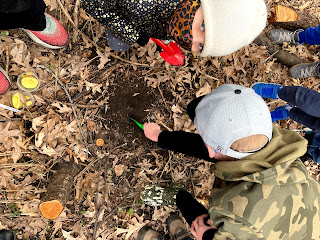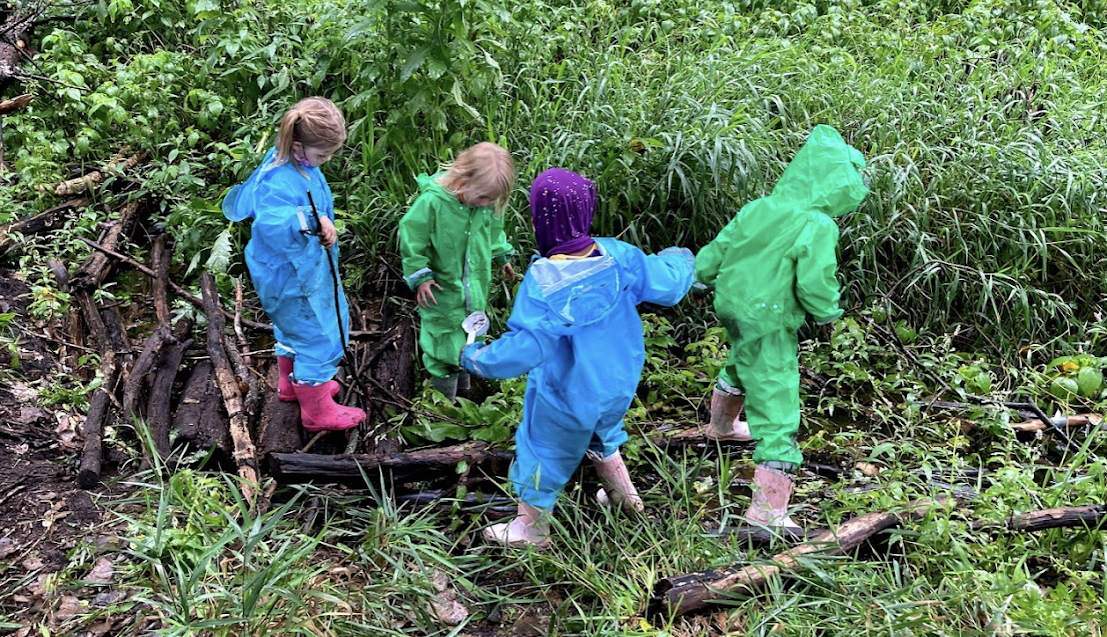During our most recent nature day, while the kids were exploring, several came up to me to show me feathers that they had found. These were unusual because of deep purple markings on one side of each feather. They showed me the location of their treasure trove and, sure enough, a few moments later the remains of the duck were found a few feet away. To be fair, not everyone enjoys a forensic study of wildlife (My student teacher excused herself and hastily wandered away to a group of children exploring sticks and rocks). But a small group stayed to engage in an informal inquiry about this duck.
 |
| Our "crime scene" |
The forensic detective decided to protect our crime scene by surrounding it with sticks. We wondered what sort of animal would enjoy a meal of duck. At whose paws did this duck meet it's demise? Some possibilities included foxes, raccoons, eagles (we have been watching the DNR eagle cam in our area and knew that bald eagles hunt for bird to eat and feed their young, as shown by the evidence of feathers in their nests). One student wondered if a hunter could have shot the duck and another student told him that it was against the law to hunt in town, you have to go to the country. Another student identifies the duck as a Mallard and yet another agreed that it was a male based on the teal head feathers. Another student noticed that insects were also eating the duck so we wondered how many animals would use the duck for food. We also wondered what would happen to the feet, which were a little ways away from the body (and how did they come off?). We decided that this rare find had to be shared with our principal. (He is the kind of principal who gives staff his cell phone and wants to interact with kids whenever possible). We called him and he came out to listen to the kids forensic detective share their observations and examine the "crime scene".
 |
Our school principal examining the "crime scene"
|
I am not sure if this inquiry will continue or if we will do formal wondering, researching or create a project that shows our learning. I am, even more, convinced of the power in learning in the moment and letting the kids take the lead in learning. The engagement was complete and more students joined the group as we were observing. As a bonus, we began learning about the cycle of life and the benefit this duck's demise has on other creatures and eventually the surrounding plants.
I will add to this post if and when we revisit the "crime scene".
 |
| My favorite phrase during nature day continues to be "Look what I found!" |




































